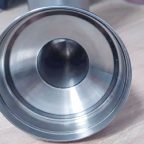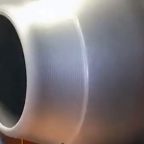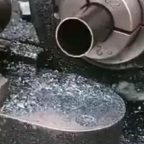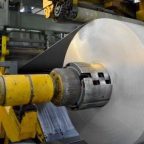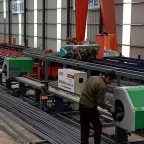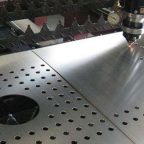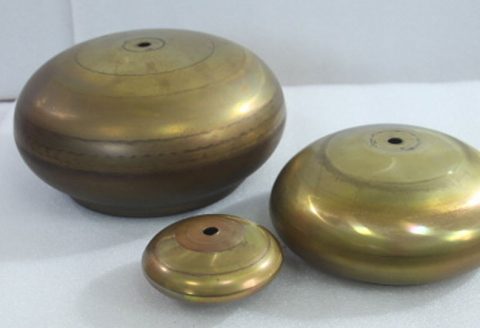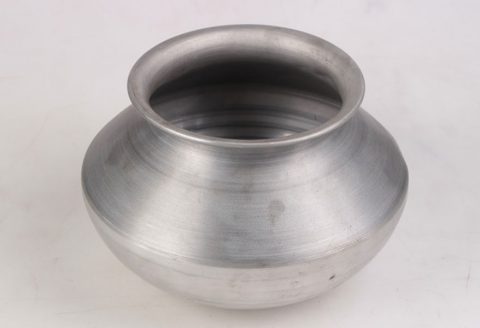
CNC (Computer Numerical Control) turning is a precision machining process that shapes a rotating workpiece using a stationary cutting tool. While CNC turning is commonly used to produce cylindrical parts, advanced techniques enable the creation of complex geometries, such as ellipses and, more specifically, oblique ellipses. An oblique ellipse, in this context, refers to an elliptical profile that is not aligned perpendicularly or parallel to the lathe’s rotational axis but is instead oriented at an angle, introducing unique challenges in machining. This article provides a comprehensive exploration of the methods, tools, programming strategies, and applications of CNC turning for oblique ellipses, emphasizing the technical intricacies, mathematical foundations, and practical considerations. The discussion is structured to offer a scientific and systematic understanding of the process, supported by detailed tables for comparison and analysis.
Introduction to CNC Turning and Elliptical Geometries
CNC turning involves mounting a workpiece on a lathe’s spindle, which rotates at controlled speeds while a cutting tool removes material to achieve the desired shape. The process is governed by G-code, a standardized programming language that dictates tool paths, feed rates, and spindle speeds. Traditional CNC turning excels at producing axisymmetric parts, such as shafts and bushings, where the geometry is symmetric about the rotational axis. However, non-axisymmetric shapes, such as ellipses, require specialized techniques due to the varying radius of the workpiece during rotation.
An ellipse is a conic section defined by its major and minor axes, where the major axis is the longest diameter and the minor axis is the shortest. In standard CNC turning, an elliptical profile might be approximated using circular arcs or point-to-point linear movements (G01 commands). However, an oblique ellipse introduces additional complexity: the elliptical profile is tilted relative to the lathe’s Z-axis (the axis of rotation), resulting in a three-dimensional tool path that cannot be achieved with simple two-axis (X-Z) motion. This necessitates advanced CNC capabilities, such as multi-axis control, macro programming, or specialized attachments, to synchronize the tool’s position with the workpiece’s rotation.
The motivation for machining oblique ellipses arises in industries requiring precision components with complex geometries, such as aerospace, automotive, and decorative manufacturing. For example, elliptical profiles may be needed for aerodynamic components, ornamental bedpost knobs, or optical lens holders. The oblique orientation may be dictated by functional requirements, such as aligning the ellipse with a specific plane in an assembly, or by aesthetic considerations. This article delves into the theoretical, practical, and technological aspects of CNC turning for oblique ellipses, providing a detailed guide for engineers, machinists, and researchers.
Mathematical Foundations of Oblique Ellipses
To understand CNC turning of oblique ellipses, it is essential to establish the mathematical framework that defines an ellipse and its oblique orientation. An ellipse in a two-dimensional plane is described by the equation:
[ \frac{x^2}{a^2} + \frac{y^2}{b^2} = 1 ]
where (a) is the semi-major axis, (b) is the semi-minor axis, and the center is at the origin ((0, 0)). In parametric form, the ellipse can be expressed as:
[ x = a \cos(\theta), \quad y = b \sin(\theta), \quad 0 \leq \theta < 2\pi ]
where (\theta) is the parametric angle. In CNC turning, the workpiece rotates about the Z-axis, and the tool moves in the X-Z plane to shape the radial (X) and axial (Z) dimensions. For a standard ellipse aligned with the Z-axis, the tool path can be derived by mapping the parametric equations to the lathe’s coordinate system, where (x) corresponds to the radial distance (X-axis) and (y) corresponds to the axial position (Z-axis).
An oblique ellipse, however, is rotated relative to the Z-axis by an angle (\phi), known as the obliquity angle. This rotation transforms the ellipse’s coordinates into a new coordinate system. The transformation can be represented by a rotation matrix:
[ \begin{bmatrix} x’ \ y’ \end{bmatrix}
\begin{bmatrix} \cos(\phi) & -\sin(\phi) \ \sin(\phi) & \cos(\phi) \end{bmatrix} \begin{bmatrix} x \ y \end{bmatrix} ]
Substituting the parametric equations of the ellipse, the coordinates of the oblique ellipse become:
[ x’ = a \cos(\theta) \cos(\phi) – b \sin(\theta) \sin(\phi) ] [ y’ = a \cos(\theta) \sin(\phi) + b \sin(\theta) \cos(\phi) ]
In CNC turning, (x’) represents the radial position (X-axis), and (y’) represents the axial position (Z-axis). The tool must follow this path while the workpiece rotates, requiring precise synchronization between the spindle’s angular position and the tool’s X-Z coordinates. The obliquity angle (\phi) complicates the tool path, as the ellipse’s projection onto the X-Z plane is no longer a simple ellipse but a distorted curve that varies with the rotation angle.
Table 1: Comparison of Standard and Oblique Ellipse Parameters
| Parameter | Standard Ellipse | Oblique Ellipse |
|---|---|---|
| Major Axis (2a) | Aligned with X or Z axis | Rotated by angle (\phi) |
| Minor Axis (2b) | Perpendicular to major axis | Rotated by angle (\phi) |
| Tool Path | 2D in X-Z plane | 3D, varies with spindle angle |
| Equation | (\frac{x^2}{a^2} + \frac{y^2}{b^2} = 1) | Rotated coordinates: (x’ = a \cos(\theta) \cos(\phi) – b \sin(\theta) \sin(\phi)), (y’ = a \cos(\theta) \sin(\phi) + b \sin(\theta) \cos(\phi)) |
| CNC Complexity | Moderate (2-axis control) | High (multi-axis or macro programming) |
CNC Turning Techniques for Oblique Ellipses
Several techniques can be employed to machine an oblique ellipse on a CNC lathe, each with its advantages, limitations, and equipment requirements. The choice of method depends on the lathe’s capabilities, the precision required, and the complexity of the part. The following sections explore the primary approaches: point-to-point approximation, macro programming, CAM-generated tool paths, and specialized attachments.
Point-to-Point Approximation
The simplest method for machining an oblique ellipse is to approximate the tool path using a series of linear segments (G01 moves). The elliptical profile is discretized into a finite number of points, calculated using the parametric equations of the oblique ellipse. Each point corresponds to a specific X-Z coordinate, and the tool moves linearly between these points while the spindle rotates.
To implement this method, the machinist calculates the X-Z coordinates for a range of (\theta) values (e.g., increments of 1 degree or smaller for higher precision). The coordinates are adjusted for the obliquity angle (\phi) using the rotation matrix. The resulting G-code might look like:
N10 G90 G54 G17
N20 G00 X50 Z10 ; Rapid move to starting position
N30 G01 X48.5 Z9.8 F100 ; Linear move to first point
N40 G01 X47.2 Z9.6 ; Next point
...
N100 G01 X48.5 Z9.8 ; Return to startAdvantages:
- Compatible with basic 2-axis CNC lathes.
- Straightforward to program manually for simple parts.
- Minimal computational requirements.
Limitations:
- Produces a faceted surface due to linear approximations, reducing smoothness.
- Requires a large number of points for high precision, increasing program length and machining time.
- Tool compensation (e.g., for tool nose radius) is challenging, as G41/G42 commands are designed for circular or linear paths.
This method is suitable for decorative parts where surface finish is less critical, such as wooden bedpost knobs, but it is inadequate for precision components requiring a true elliptical profile.
Macro Programming
Macro programming offers a more sophisticated approach by using the CNC controller’s ability to perform calculations during execution. A macro is a subprogram that uses variables, loops, and mathematical operations to generate the tool path dynamically. For an oblique ellipse, the macro calculates the X-Z coordinates based on the parametric equations and the obliquity angle, adjusting the tool position in real-time as the spindle rotates.
A sample macro for an oblique ellipse might be written as follows (syntax varies by controller, e.g., Fanuc):
O1000 (OBLIQUE ELLIPSE MACRO)
#100 = 50 ; Major axis (a)
#101 = 30 ; Minor axis (b)
#102 = 45 ; Obliquity angle (degrees)
#103 = 0 ; Initial theta (degrees)
WHILE [#103 LT 360] DO1
#104 = #103 * 0.0174533 ; Convert to radians
#105 = #100 * COS[#104] * COS[#102 * 0.0174533] - #101 * SIN[#104] * SIN[#102 * 0.0174533] ; X-coordinate
#106 = #100 * COS[#104] * SIN[#102 * 0.0174533] + #101 * SIN[#104] * COS[#102 * 0.0174533] ; Z-coordinate
G01 X#105 Z#106 F100
#103 = #103 + 1 ; Increment theta
END1
M99Advantages:
- Generates a smooth tool path without faceting, as points can be calculated at fine intervals.
- Reduces G-code file size, as the tool path is computed on-the-fly.
- Allows for tool nose radius compensation by adjusting the ellipse parameters.
Limitations:
- Requires a CNC controller with macro programming capabilities (e.g., Fanuc Custom Macro B).
- Demands programming expertise to implement and debug.
- Computation time may slow down execution on older controllers.
Macro programming is ideal for moderately complex parts where precision is important but CAM software is unavailable. It is widely used in industries like aerospace for machining elliptical grooves or contours.
CAM-Generated Tool Paths
Computer-Aided Manufacturing (CAM) software provides the most robust solution for machining oblique ellipses. CAM systems, such as Mastercam, Siemens NX, or Fusion 360, allow the user to define the elliptical geometry in a CAD model, specify the obliquity angle, and generate a precise tool path. The software calculates the tool’s X-Z coordinates, accounts for tool geometry (e.g., nose radius), and optimizes feed rates and cutting strategies.
The process typically involves:
- CAD Modeling: Create a 3D model of the part with the oblique ellipse, defining the major and minor axes and the obliquity angle.
- Tool Selection: Choose a turning tool with appropriate geometry (e.g., diamond-shaped insert for versatility).
- Tool Path Generation: Use the CAM software’s turning module to generate a contouring tool path, specifying parameters like depth of cut, feed rate, and spindle speed.
- Simulation: Run a virtual simulation to verify the tool path and detect collisions or errors.
- Post-Processing: Convert the tool path into G-code tailored to the specific CNC lathe.
Advantages:
- Produces a true elliptical profile with high precision and smooth surface finish.
- Handles complex geometries, including variable obliquity angles and multi-feature parts.
- Automates tool compensation and optimization, reducing programming effort.
Limitations:
- Requires access to CAM software and trained personnel.
- Increases setup time due to CAD modeling and post-processing.
- May generate large G-code files for fine increments, requiring high-performance controllers.
CAM-generated tool paths are the preferred method for high-precision applications, such as aerospace components or medical implants, where accuracy and repeatability are paramount.
Specialized Attachments
For lathes lacking multi-axis capabilities or advanced controllers, specialized attachments can enable oblique ellipse turning. One such device is an elliptical turning jig, which mechanically guides the tool to trace an elliptical path. The jig typically consists of a cross-slide mechanism with two perpendicular slots, each containing a follower (e.g., a T-nut). A bar connects the followers, and the tool is mounted at a point on the bar. As the followers move along the slots, the tool traces an ellipse, with the obliquity angle set by adjusting the jig’s orientation.
Another approach is the use of a servo-driven C-axis, which allows the spindle to rotate to precise angular positions. By coupling C-axis rotation with X-Z motion, the lathe can machine non-axisymmetric shapes like oblique ellipses. This requires a CNC lathe with live tooling or a mill-turn center.
Advantages:
- Enables elliptical turning on basic lathes without advanced programming.
- Mechanically ensures a true elliptical path, reducing reliance on G-code accuracy.
- C-axis turning offers flexibility for complex parts with multiple features.
Limitations:
- Jigs require custom fabrication and precise setup, increasing preparation time.
- C-axis turning demands expensive equipment (e.g., mill-turn centers).
- Limited to specific ellipse sizes and obliquity angles based on jig design.
Specialized attachments are practical for small-scale production or hobbyist applications, such as model engineering, where custom jigs can be built to suit specific parts.
Table 2: Comparison of CNC Turning Techniques for Oblique Ellipses
| Technique | Precision | Complexity | Equipment Required | Applications | Limitations |
|---|---|---|---|---|---|
| Point-to-Point Approximation | Low to Moderate | Low | Basic 2-axis CNC lathe | Decorative parts, low-precision components | Faceted surface, long G-code |
| Macro Programming | High | Moderate to High | CNC lathe with macro support | Aerospace, automotive contours | Requires programming expertise |
| CAM-Generated Tool Paths | Very High | High | CNC lathe, CAM software | Precision components, medical implants | Software cost, setup time |
| Specialized Attachments | Moderate to High | Moderate | Custom jig or C-axis lathe | Model engineering, small-scale production | Limited flexibility, equipment cost |
Tooling and Setup Considerations
The success of CNC turning an oblique ellipse depends heavily on tooling and setup. The following sections discuss key considerations for tool selection, workpiece fixturing, and machine calibration.
Tool Selection
The cutting tool must be chosen based on the workpiece material, ellipse geometry, and surface finish requirements. Common tool types for turning include:
- Diamond-Shaped Inserts (DCMT/DCGT): Versatile for contouring, with a 55-degree included angle suitable for elliptical profiles.
- Round Inserts (RCMT): Ideal for roughing due to their strength, but less precise for finishing oblique ellipses.
- Custom-Ground Tools: Used for specific ellipse geometries or when standard inserts are inadequate.
The tool’s nose radius is critical, as it affects surface finish and the ability to follow the elliptical path accurately. A smaller nose radius (e.g., 0.4 mm) provides better precision for tight curves, while a larger radius (e.g., 0.8 mm) improves surface finish but may introduce errors in sharp transitions. Tool material, such as carbide or coated carbide, should be selected for durability and compatibility with the workpiece (e.g., steel, aluminum, or plastic).
Workpiece Fixturing
Secure fixturing is essential to prevent vibration and deflection, which can compromise precision. Common fixturing methods include:
- Three-Jaw Chuck: Suitable for cylindrical workpieces, providing good concentricity.
- Collet Chuck: Offers higher precision for smaller parts, reducing runout.
- Custom Mandrels: Used for non-cylindrical workpieces or when the ellipse is part of a complex assembly.
The workpiece must be aligned with the lathe’s spindle axis to ensure the oblique ellipse is machined at the correct angle. This may require a dial indicator to check runout and angular alignment, especially for parts with pre-machined features.
Machine Calibration
Before machining, the CNC lathe must be calibrated to ensure accuracy. Key calibration steps include:
- Tool Offset Measurement: Use a tool setter or manual touch-off to set the X and Z offsets for each tool.
- Work Offset Setting: Define the G54 work coordinate system to align the tool path with the workpiece’s datum.
- Spindle and Axis Alignment: Verify that the spindle and X-Z axes are perpendicular, as misalignment can distort the elliptical profile.
For lathes with C-axis or live tooling, the C-axis zero position must be calibrated to synchronize spindle rotation with tool motion. Regular maintenance, such as checking for backlash in the X and Z axes, is also critical to maintain precision.
Programming Strategies and G-Code Optimization
Programming an oblique ellipse requires careful consideration of G-code structure, tool path optimization, and error handling. The following sections outline best practices for each technique.
Point-to-Point Programming
For point-to-point approximation, the G-code should minimize the number of points while maintaining acceptable precision. A chord error (the maximum deviation between the linear segment and the true ellipse) of 0.01 mm or less is typically sufficient for most applications. The chord error can be estimated using:
[ \text{Chord Error} = r \left(1 – \cos\left(\frac{\Delta\theta}{2}\right)\right) ]
where (r) is the local radius of curvature, and (\Delta\theta) is the angular increment between points. Smaller (\Delta\theta) values reduce the chord error but increase program length. The G-code should include:
- Modal Commands: Use G01 (linear interpolation) as a modal command to reduce code redundancy.
- Feed Rate Optimization: Adjust the feed rate (F) based on material and tool type, typically 50–200 mm/min for finishing passes.
- Loop Structures: If the controller supports subprograms (e.g., M98), use them to repeat the tool path for multiple passes.
Macro Programming
Macro programs should be structured for clarity and efficiency:
- Variable Definitions: Clearly define variables for major axis ((a)), minor axis ((b)), obliquity angle ((\phi)), and increment ((\Delta\theta)).
- Error Checking: Include conditional statements to prevent invalid inputs (e.g., negative axes or excessive angles).
- Incremental Steps: Use small angular increments (e.g., 0.1–1 degree) to ensure smoothness, balancing precision with execution speed.
The macro should also account for tool nose radius compensation by offsetting the calculated coordinates. For a tool with nose radius (r_n), the adjusted coordinates are:
[ x_{\text{adj}} = x’ + r_n \cos(\psi), \quad z_{\text{adj}} = y’ + r_n \sin(\psi) ]
where (\psi) is the angle of the tangent to the ellipse at the current point, calculated using the derivative of the parametric equations.
CAM Programming
CAM software simplifies programming but requires careful parameter setup:
- Tolerance Settings: Set a low tolerance (e.g., 0.001 mm) to ensure the tool path follows the true ellipse.
- Stepover Control: For roughing passes, use a larger stepover (e.g., 0.5 mm) to reduce machining time, followed by a finishing pass with a smaller stepover (e.g., 0.05 mm).
- Post-Processor Selection: Choose a post-processor compatible with the CNC controller to ensure correct G-code formatting.
Simulation is critical to verify the tool path and detect issues like gouging or incomplete cuts. The CAM system should also optimize the tool path to minimize air cutting (non-cutting moves) and ensure smooth transitions between segments.
Error Handling
Common programming errors include:
- Incorrect Coordinates: Verify that the calculated X-Z coordinates match the intended ellipse geometry.
- Tool Compensation Errors: Ensure G41/G42 commands are correctly applied, especially for macro or CAM programs.
- Spindle Synchronization: For C-axis turning, confirm that the spindle angle aligns with the tool position.
Debugging can be facilitated by running the program in single-block mode and using simulation software to visualize the tool path before machining.
Practical Applications and Case Studies
CNC turning of oblique ellipses has diverse applications across industries. The following case studies illustrate real-world examples and the techniques employed.
Aerospace: Elliptical Contours for Turbine Blades
In aerospace, turbine blades often feature elliptical cross-sections to optimize aerodynamic performance. An oblique ellipse may be required to align the blade’s profile with the airflow direction. A typical setup involves:
- Equipment: A 5-axis mill-turn center with C-axis control.
- Technique: CAM-generated tool path using Siemens NX, with a 0.4 mm nose radius tool for finishing.
- Challenges: Maintaining a surface finish of Ra 0.8 µm and dimensional tolerances of ±0.01 mm.
- Solution: The CAM system generated a tool path with 0.1-degree increments, synchronized with C-axis rotation. Multiple finishing passes ensured smoothness, and in-process inspection with a CMM (Coordinate Measuring Machine) verified accuracy.
Automotive: Decorative Trim Components
Automotive manufacturers use oblique ellipses for decorative trim, such as gear shift knobs or dashboard accents. A case study involved machining an aluminum knob with a 60 mm major axis, 40 mm minor axis, and 30-degree obliquity angle:
- Equipment: A 2-axis CNC lathe with Fanuc 0i-TF controller.
- Technique: Macro programming with 1-degree increments and a 0.8 mm nose radius tool.
- Challenges: Achieving a polished finish without faceting.
- Solution: The macro calculated 360 points per revolution, and a polishing operation followed machining to achieve a mirror-like finish. The program size was kept under 10 KB, ensuring compatibility with the controller.
Model Engineering: Historical Reproductions
Model engineers often replicate historical components, such as steam engine glands, which may feature oblique elliptical profiles. A hobbyist used a custom jig to machine a brass gland:
- Equipment: A manual lathe retrofitted with a CNC cross-slide and a wooden elliptical jig.
- Technique: Mechanical jig with two perpendicular slots, guiding a 0.5 mm nose radius tool.
- Challenges: Limited precision due to manual setup.
- Solution: The jig was calibrated using a dial indicator, and multiple light cuts (0.1 mm depth) ensured acceptable accuracy for decorative purposes.
Table 3: Case Study Comparison
| Industry | Component | Technique | Equipment | Precision | Surface Finish | Challenges |
|---|---|---|---|---|---|---|
| Aerospace | Turbine Blade | CAM + C-axis | 5-axis mill-turn | ±0.01 mm | Ra 0.8 µm | Synchronization, tight tolerances |
| Automotive | Decorative Knob | Macro Programming | 2-axis CNC lathe | ±0.05 mm | Polished | Program size, faceting |
| Model Engineering | Steam Engine Gland | Elliptical Jig | Retrofitted lathe | ±0.1 mm | Ra 1.6 µm | Manual setup, limited precision |
Challenges and Limitations
Machining oblique ellipses presents several challenges:
- Geometric Complexity: The 3D tool path requires precise coordination of X, Z, and spindle motion, increasing the risk of errors.
- Controller Limitations: Older CNC controllers may lack the processing power for real-time macro calculations or large G-code files.
- Tool Wear: The varying cutting forces along the elliptical path can accelerate tool wear, necessitating frequent inspection.
- Surface Finish: Achieving a smooth finish is difficult, especially with point-to-point methods or improper tool selection.
- Setup Time: Custom jigs, CAM programming, and calibration increase setup time, impacting small-batch production.
Mitigation strategies include using high-performance controllers, selecting wear-resistant tools, and optimizing tool paths to minimize cutting forces. Regular maintenance and operator training are also critical to overcoming these challenges.
Future Trends and Innovations
Advancements in CNC technology are enhancing the ability to machine oblique ellipses:
- AI-Driven Tool Path Optimization: Machine learning algorithms can optimize tool paths for speed, accuracy, and tool life, reducing programming effort.
- Hybrid Manufacturing: Combining additive manufacturing (e.g., 3D printing) with CNC turning allows for near-net-shape workpieces, simplifying elliptical machining.
- Advanced Controllers: Next-generation controllers with faster processors and expanded memory support complex macros and large G-code files.
- In-Process Metrology: Real-time measurement systems, such as laser scanners, enable adaptive machining to correct errors during cutting.
These innovations promise to make oblique ellipse turning more accessible and efficient, expanding its applications in precision manufacturing.
Conclusion
CNC turning of oblique ellipses is a complex but achievable process that combines mathematical precision, advanced programming, and specialized equipment. Techniques like point-to-point approximation, macro programming, CAM-generated tool paths, and specialized attachments offer varying levels of precision and complexity, catering to diverse applications from aerospace to model engineering. By understanding the mathematical foundations, tooling requirements, and programming strategies, machinists can produce high-quality elliptical components with the desired obliquity. As CNC technology evolves, new tools and methods will further streamline the process, making it an integral part of modern manufacturing.
This article has provided a detailed exploration of the subject, supported by tables and case studies to aid understanding. Whether for industrial production or hobbyist projects, the techniques described here offer a robust framework for mastering the art and science of CNC turning for oblique ellipses.
Maximize Tooling and CNC Metal Spinning Capabilities.

At BE-CU China Metal Spinning company, we make the most of our equipment while monitoring signs of excess wear and stress. In addition, we look into newer, modern equipment and invest in those that can support or increase our manufacturing capabilities. Our team is very mindful of our machines and tools, so we also routinely maintain them to ensure they don’t negatively impact your part’s quality and productivity.
Talk to us today about making a rapid prototype with our CNC metal spinning service. Get a direct quote by chatting with us here or request a free project review.
BE-CU China CNC Metal Spinning service include : CNC Metal Spinning,Metal Spinning Die,Laser Cutting, Tank Heads Spinning,Metal Hemispheres Spinning,Metal Cones Spinning,Metal Dish-Shaped Spinning,Metal Trumpet Spinning,Metal Venturi Spinning,Aluminum Spinning Products,Stainless Steel Spinning Products,Copper Spinning Products,Brass Spinning Products,Steel Spinning Product,Metal Spinnin LED Reflector,Metal Spinning Pressure Vessel,
